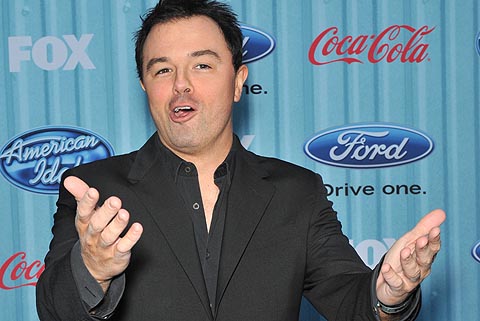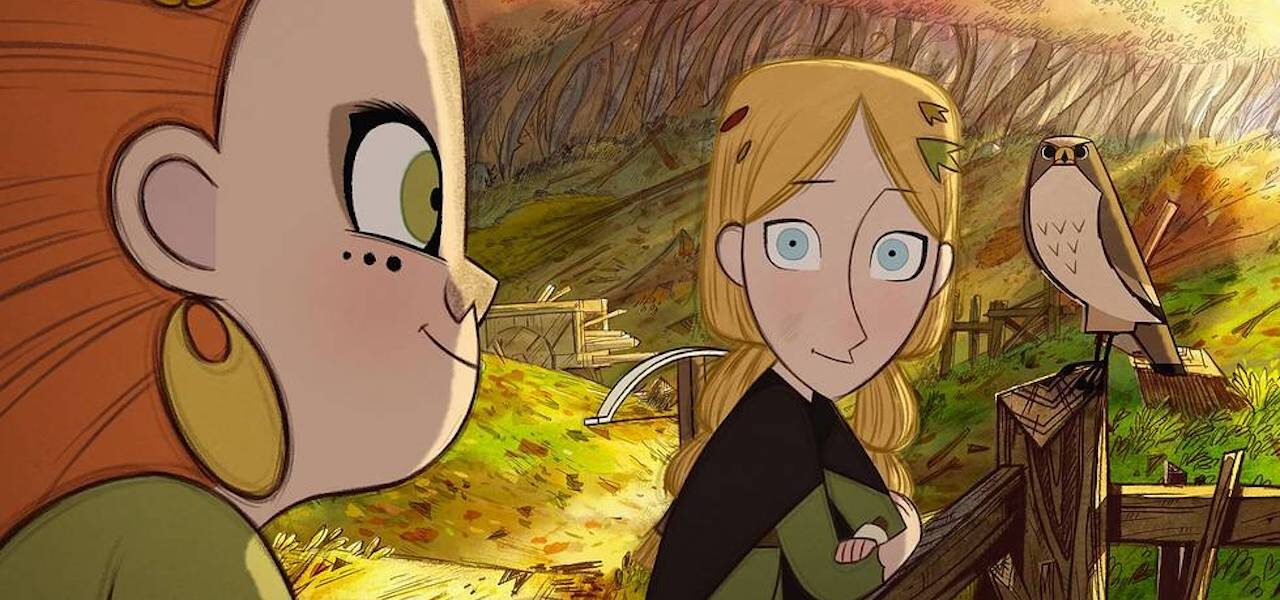
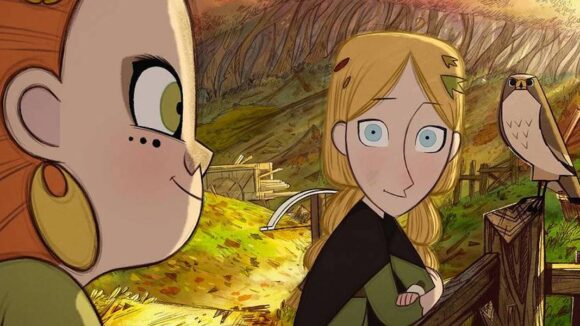
Ten Things We Learned From Cartoon Saloon’s Profile In ‘The New Yorker’
Warm reviews, Oscar buzz, awards for best animated feature from the New York Film Critics Circle and Los Angeles Film Critics Association: Wolfwalkers has been on a roll since its release last month. Yet its greatest distinction so far may be that it has sparked a New Yorker profile of its director Tomm Moore and Cartoon Saloon, the Irish studio that produced it (and which Moore co-founded).
The New Yorker rarely goes long on animation; we can count the number of industry figures it has profiled in the last decade on one hand. We look forward to the day when that changes. In the meantime, here are ten takeaways from Mark O’Connell’s article “Cartoon Saloon and the New Golden Age of Animation”:
1. Moore was a little disillusioned by Sullivan Bluth Studios in Dublin. Visiting it as a teenager, he was expecting “Willy Wonka’s factory.” Instead, “it seemed that Don Bluth was the only one there with a creative job, and that for everyone else it was this really industrial process.” O’Connell notes that Cartoon Saloon tries to differentiate its culture from Sullivan Bluth’s “industrial approach” by fostering a more collaborative creative process.
2. The production of The Secret of Kells was sparked in part by Mulan. Moore and his friend Aiden Harte had been mulling a story based on the Book of Kells, an ancient Irish Gospel book, since their teenage years. But when Disney released a film based on a Chinese legend, “Moore decided that they had better make their Irish feature before Disney beat them to it.” It became Cartoon Saloon’s first feature.
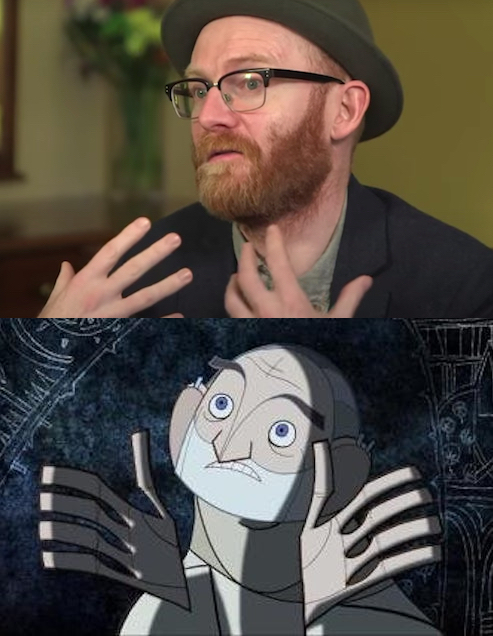
3. Brother Aidan’s looks in The Secret of Kells are modeled on Paul Young, co-founder of Cartoon Saloon and producer of its works.
4. After The Secret of Kells, Moore considered working in Hollywood. “Moore told me that everyone at Cartoon Saloon could have got on a flight to L.A. and walked into a job at a major studio; for a time, he thought about doing so,” writes O’Connell. But the director changed his mind after people at these studios told him, “‘Man, you guys are living the dream! You’re doing what everybody wishes they could do, making your own films in your own way.'”
5. Moore’s follow-up feature Song of the Sea was inspired by the discovery of dead seals on an Irish beach. He stumbled on them with his young son while on holiday; a local told him that fishermen blamed seals for the declining fish population. This cold reasoning prompted Moore to explore Celtic mythology that evinced a “better, more pantheistic way of looking at the world.”
6. Moore and fellow studio co-founder Nora Twomey develop their films very differently. O’Connell writes that while Moore “develops the art and the story for his films hand in hand, Twomey … focusses first on the narrative.” Working very carefully on the animatic, she “obsessively tweaks the narrative, doing many of the voices herself.”
7. Working on her feature The Breadwinner helped Twomey cope with chemotherapy. She was diagnosed with breast cancer during the production. “Work gave me some sense of normality,” she told O’Connell. “I could look at a scene of animation, and if there was a problem with it I could fix it.”
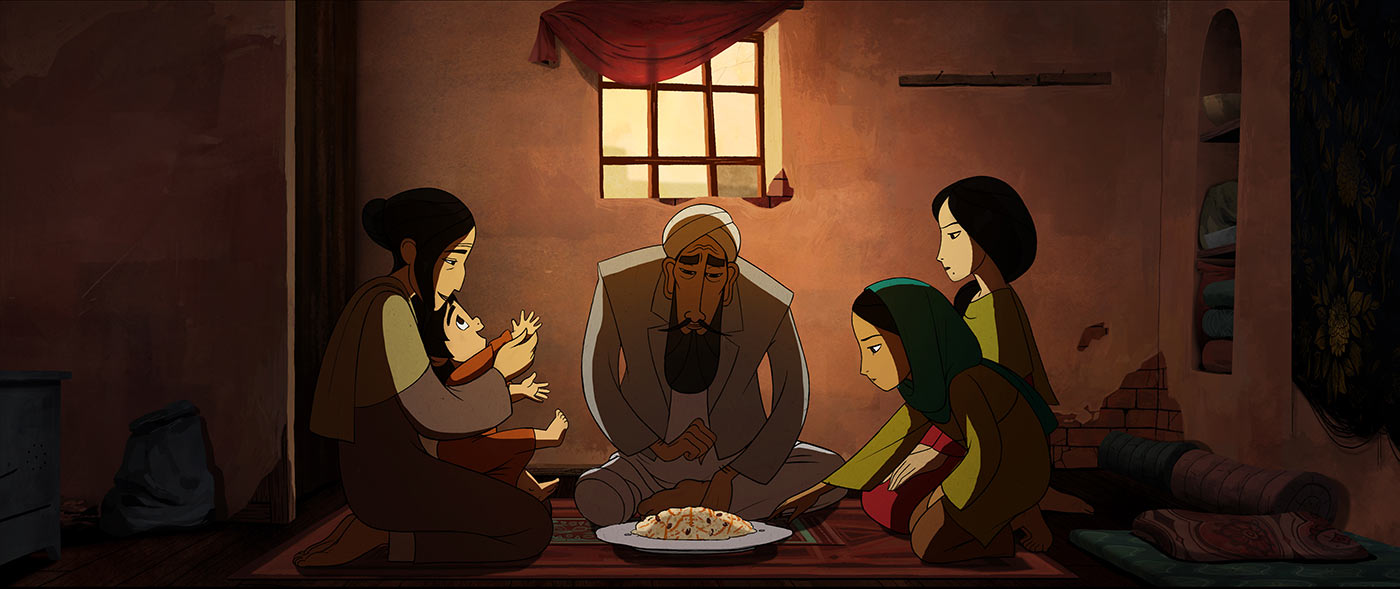
8. Moore is ambivalent about Cartoon Saloon’s merchandising. A forthcoming line of plush toys based on the studio’s Puffin Rock series is made according to strict standards for sustainability and fair trade, but the director is unconvinced: “’I used to sort of buy into that whole sustainable-consumption model,’ he said, ‘but I don’t see it that way anymore. You know, “No ethical consumption under capitalism,” and all that.’”
9.Cartoon Saloon has inspired vegetarian dishes at a local restaurant. While eating there, Moore (who is vegan) pointed O’Connell to a sub-heading in the vegetarian section titled “Inspired by Cartoon Saloon.”
10. Moore’s post-Wolfwalkers plan is to microdose psychedelics and practice life drawing. Freed from the pressure of film production, he’s hoping to spend a few months in Paris and Amsterdam with his wife, exploring his interests.

